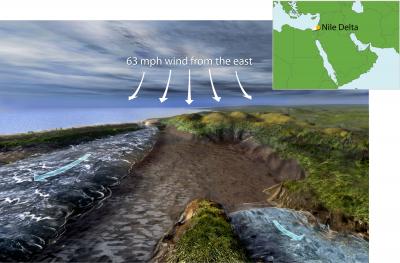Climate Change Scientists Claim: Antarctic Ice Sheet Built From the Bottom Up
A new study is claiming that the Antarctic ice sheets are formed by water refreezing at the bottom rather than just by the snow that falls on top. Seeking to understand how the thawing of Antarctica could possibly flood low-lying coastal regions, scientists believe that their research will be able to help make the effects of climate change clearer.
The report is conflicting with the traditional views held about Antarctica, saying that the ice sheets are formed only by the falling snow being compressed into ice and flowing to the ocean. The old view can be described as a layered cake, the newest layer always being placed on top.
The new view that these findings present is as if another person took icing and found a way to inject it into various parts of the cake, areas that are usually thought to remain scarcely changed. Specifically, in an area of East Antarctica, scientists have found that approximately 24% of the ice developed as a result of refrozen ice.
These studies could change global views and reactions to the possibility of the Earth’s climate change and the possibility of other life that could exist or did exist on the continent. By understanding how these ice sheets are formed, we can have a better knowledge of how global warming could have effects on the entire globe starting with Antarctica and Greenland.
Antarctica is covered by two ice sheets, which are divided by Transantarctic Mountain range. The height of the mountains there is comparable with those in the Alps. The ice sheets contain enough ice to raise the sea levels by approximately 187 feet (57 meters) if they were to ever melt.
It is believed that the Antarctic ice sheets developed nearly 32 million years ago, but other researchers say that the oldest ice found within them is only 1.4 million years old. The theory of refreezing ice could explain this and other natural occurrences.




